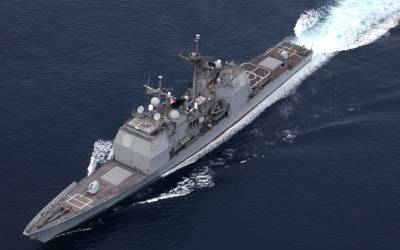Americas The State Department has approved Canada’s request to gain access to the Mobile User Objective System service and procure associated logistics and program support services from the US government under a potential $138 million foreign military sales agreement....
Forces – Special Ops Articles
The JAS-39 Gripen: Sweden’s 4+ Generation Wild Card
South African JAS-39D (click to view full) As a neutral country with a long history of providing for its own defense against all comers, Sweden also has a long tradition of building excellent high-performance fighters with a distinctive look. From the long-serving...
F-35 To Be Able To Carry Nukes | General Motors Finished Testing ISV For UAE | Philippines Get Guarani APCs
Americas Lockheed Martin’s F-35A Joint Strike Fighter aircraft has received authorization to carry nuclear bombs. Russ Goemaere, a spokesman for the F-35 Joint Program Office (JPO), recently told Breaking Defense that the much-awaited certification was actually...
Triman Tapped For AEGIS Processor | Kuwait To Get More Eurofighters In The Next Months | Latvia Bolsters Border Defense
Americas Triman Industries won $21 million firm-fixed-price, for the procurement of five components of the multi-mission signal processor used in the AEGIS combat system. The ordering period is expected to be completed by November 2024. All work will be performed in...
Serious Dollars for AEGIS Ballistic Missile Defense (BMD)
AEGIS-BMD: CG-70 launches SM-3 (click to view full) The AEGIS Ballistic Missile Defense System seamlessly integrates the SPY-1 radar, the MK 41 Vertical Launching System for missiles, the SM-3 Standard missile, and the ship's command and control system, in order to...
Constellation-Class Gets CAPTAS-4 | Rheinmetall Supplies NATO Member With Rocket Launcher Ammo | Taiwan Developing Laser Weapon
Americas Lockheed Martin won a $54,5 million modification to a cost-plus-fixed-fee order against a previously issued basic ordering agreement. This modification adds scope to provide non-recurring engineering and associated materials in support of power thermal...
Canada Revamps Its Fighter Pilot Training Program | 3rd Abrams Tank Reportedly Lost in Ukraine | Singapore Introduces New Urban Warfare Technology
Americas The Royal Canadian Air Force (RCAF) is transitioning its fighter pilot training program, marking a significant change for its future pilots. The CT-155 Hawk aircraft, which has served as the primary trainer for decades, will be retiring from service. This...
RACAF Unveils New Concept Called DIT | China To Boost Defense Spending | Saab Started Carl Gustaf Rifle Factory In India
Americas Lockheed Martin Rotary and Mission Systems won a $34,142,015 cost-plus-fixed-fee and cost-plus-incentive-fee type modification to exercise options for AEGIS development and test sites operation and maintenance at the Combat Systems Engineering Development...
Lockheed Tapped For Trident Integration Into Columbia/Dreadnought | Russia Expands Military Base In Mali | India To Commission Seahawk
Americas Lockheed Martin Space won a $109.3 million contract to support the integration of the Trident II (D5) Missile and reentry subsystems into the Common Missile Compartment for the US/UK Columbia/Dreadnought submarine construction programs. Work is expected to be...


